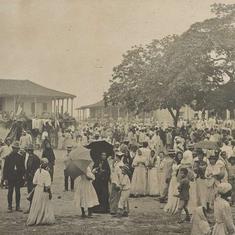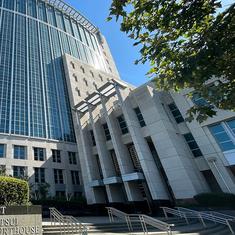Welcome to the Political Fix by Rohan Venkataramakrishnan, a newsletter on Indian politics and policy. To get it in your inbox, sign up here .
Now, more than ever, independent journalism in India needs your help. You can support this newsletter and all the work we do at Scroll.in either by subscribing to Scroll+ or by contributing any amount you prefer to the Scroll.in Reporting Fund.
The Big Story: Permutations and combinations
Prime Minister Narendra Modi didn’t have an easy week.
Covid-19 cases in India crossed the 400,000-mark, with more than 13,000 deaths as of June 21. Nepal’s president approved a Constitutional Amendment altering his country’s map to include territory that India insists is actually part of the state of Uttarakhand.
And American agency Fitch Ratings lowered India’s outlook from stable to negative, explaining that the Modi government’s focus on a Hindu-nationalist agenda “risks becoming a distraction for economic reform implementation and could further raise social tensions”.
But of course, at the very top on the agenda was China, after the first deaths along the disputed border in more than 40 years.
On last week’s Friday Links edition, we brought you the details: brutal combat in Eastern Ladakh with improvised weapons (and, as per convention, no firearms) after – according to India’s External Affairs Ministry – Chinese troops crossed over to the Indian side “to erect a structure”.
The subsequent violence left 20 Indian soldiers dead, with New Delhi saying there had been casualties on both sides. Ten Indian soldiers were held captive by the Chinese and returned later. Meanwhile, independent reports have pointed to Chinese incursions at several points along the disputed border, with some claiming that Beijing is now in control of 60 square kilometres previously held or patrolled by Indian troops.
This was the build-up to an all-party meeting called by Modi on Friday to take the country’s political leadership into confidence about the developments. Midway through the meeting, the Prime Minister’s Office decided to brief the media about how it was going.
This was circulated to media from PMO as ‘Govt Sources’ even when the meeting was underway.
— Arvind Gunasekar (@arvindgunasekar) June 19, 2020
Whoever has drafted this, didn’t know that Naveen Patnaik didn’t attend the all party meeting convened by PM Modi while Pinaki Misra represented BJD. pic.twitter.com/m4SXEG1oSs
But the most important development was when Modi addressed the incident itself, making this unexpected statement.
“Neither has anyone intruded upon our borders, not is anyone currently intruding, nor is any Indian post in the hands of anyone else. In Ladakh, 20 of our soldiers have died but those who have raised their eyes at Bharat Mata, they have been taught a lesson.”
Of course, it was possible to quibble on semantics – was Modi speaking in the abstract? what did he mean by “borders”? – yet the effect of his statement was meant to be simple: the Indian prime minister was claiming there had been no Chinese intrusion, and no land or border posts captured.
I put down five questions about this statement here.
For anyone following developments closely, Modi’s comment was surprising. Not just because reporting had suggested that as much as 60 square kilometres had been grabbed by the Chinese, but also because the Indian External Affairs Ministry had spoken of an incursion as being the cause of the violence.
Yet here was India’s prime minister insisting there had been no intrusion. What explains this?
Was it a mistake?
The first indication that the statement hadn’t gone as expected was when the official press release did not carry Modi’s comments verbatim, in English.
Then, as numerous analysts, commentators and army veterans asked whether India’s was capitulating to the Chinese by claiming there had been no intrusions, the government put out a two-page clarification to explain just one sentence of Modi’s statement.
The clarification tried to address the controversy over the comments, without actually addressing why Modi had claimed that there had been no intrusion.
Govt clarifies PM Modi's yesterday's statement: "As regards transgression of LAC, it was clearly stated that the violence in Galwan on 15 June arose because Chinese side was seeking to erect structures just across the LAC & refused to desist from such actions." @IndianExpress pic.twitter.com/5Fl0hXFP7t
— Krishn Kaushik (@Krishn_) June 20, 2020
Concerns that it may play badly for India also arose from the fact that the Chinese media immediately latched onto Modi’s comments, translating and spreading them, as a way of re-affirming Beijing’s official stance that Indian troops had crossed over into their territory.
“No outsider was inside #Indian territory in #Ladakh nor had any border post of the Indian Army captured by outside forces.” Chinese media has translated the speech by #Indian Prime Minister Narendra Modi on an all- party meet called by him on Friday. #ChinaIndiaFaceoff pic.twitter.com/mM58NBjytG
— Shen Shiwei沈诗伟 (@shen_shiwei) June 20, 2020
Was it deliberately muscular?
Never mind the quibbling over whether is actually true. The effect of Modi’s comments was to create the impression that the Indian Army has repelled the Chinese at the border, never allowing them to cross over. This is why 20 soldiers are dead.
It may lack accuracy – after all, the ministry of external affairs has clearly said that there were intrusions and the reports suggest that incursions have taken place at many parts of the disputed border. Bharatiya Janata Party National General Secretary Ram Madhav in fact said that the incursions now are “as bad” as they were in 2013, when Chinese troops were 19 km inside the Indian side of the Line of Actual Control.
But it allows Modi to create the image of Indian soldiers valiantly keeping the Chinese out. How much will the confusing follow-up clarification, in English, actually make its way around compared to Modi’s video comments in Hindi? Could Modi have been willing to deal with the diplomatic and military fall-out of such a statement in order to set the political narrative through an inaccurate re-telling?
Moreover, the soldiers were from the Bihar Regiment, a unit named after the northern Indian state, even though it includes troops from all over the country. Coincidentally, elections are due to be held in Bihar this year, making this muscular narrative of a courageous stand – and no inch yielded to the Chinese – even more compelling for Modi, who is always in campaign mode.
#WATCH - Country is proud of the sacrifice made by our braves in Ladakh. Today when I am speaking to people of Bihar, I will say the valour was of Bihar Regiment, every Bihari is proud of it. I pay tributes to the braves who laid down their lives for the nation: PM Narendra Modi pic.twitter.com/l7ou255zUI
— ANI (@ANI) June 20, 2020
Was it deliberately realist?
Some observers see Modi’s comments as a way of protecting his government’s image, while also creating the space for de-escalation. By not admitting to incursions, even if they have happened, the prime minister reduces the public demand for more retribution – though on the ground this may mean capitulation to the Chinese efforts to the change the status quo.
This realist reading presumes that the Modi government has accepted the asymmetry of power between India and China and, knowing that New Delhi has few strategic options here, would rather de-escalate (and save face) than let the situation fester.
If this means that there is also growing political will within Government to push for an early border settlement with China I think that is an interesting development &need not be opposed.The question is how we resolve issue of the Chinese attitude on McMahon Line and Tawang.
— Nirupama Menon Rao, निरुपमा राउ, بینظیر (@NMenonRao) June 20, 2020
Some are calling for Churchillian defiance—many, perhaps not coincidentally, people who can be reasonably certain their bodies will not be torn apart or livelihoods ruined by the course of action they advocate
— Praveen Swami (@praveenswami) June 19, 2020
This quote, from Ananth Krishnan’s summary of coverage in the Chinese media, suggests that this is also how Beijing is reading it:
“‘Modi’s remarks will be very helpful to ease the tensions because as the Prime Minister of India, he has removed the moral basis for hardliners to further accuse China,’ Lin Minwang, a professor at Fudan University’s Center for South Asian Studies in Shanghai, told the paper.”
It is worth noting though that, at least as far I know (and send me links if you have seen otherwise), no right-wing observer is making this realist argument. Pro-government publications like Swarajya are in fact calling for India to take on China, despite its bigger economy and military.
Ram Madhav, the BJP ideologue mentioned above who is considered one of its top minds on foreign policy, has expressly decried an approach that accepts Chinese military superiority as defeatist, saying “post-2014, a policy shift has been witnessed at Chushul in 2014, Doklam in 2017 and Galwan Valley and Pangong Tso lake now. Unlike in the past, our border security establishment actively engages and physically prevents incursions by the other side.”
What does China want?
Amid all these questions about India’s approach, it also remains unclear what Beijing’s intended outcome is here. We could fill up a whole other newsletter with the analysis and speculation around this:
A standard principle: When countries are irrationally over-extended in policing or running out of money, others renegotiate their position w them.
— Neelanjan Sircar (@NeelanjanSircar) June 17, 2020
When money runs out, seemingly disconnected bad things (China, migrant crisis) appear. Also saw it in late 80s & before Emergency. https://t.co/DPn61HAyCW
China's been busy
— Tanvi Madan (@tanvi_madan) June 19, 2020
- Australia (cyber attack, economic coercion)
- India (territorial status quo changed, soldiers killed)
- Japan (vessels sent near Senkakus)
- 🇲🇾🇮🇩🇵🇭 (maritime harassment)
- Taiwan (airspace intrusions)
- Vietnam (fishing vessel rammed)
- HK (nat'l security law)
This week's cartoon from KAL: https://t.co/oJxaAVpr5W pic.twitter.com/e0kr6egZHm
— The Economist (@TheEconomist) June 19, 2020
Was China only taking advantage of a tactical opportunity? Was it angered by the changes to Article 370 that altered Ladakh’s status? Was it “salami slicing”, by pushing the envelope and then retreating half way? Was it taking the global distraction due to Covid-19 as an opportunity to expand? Did it spot a weakened India and decide now was the time to press on? Or was it reacting to India’s improved infrastructure along the border and a more stridently anti-China line in Indian domestic politics?
Yun Sun, director of the China Program at the Stimson Centre, offered his conclusion in this War on the Rocks piece:
“Beijing believes India is exploiting a temporary period of Chinese weakness and is responding forcefully as a result. Strategically, it may not help China’s desired goal to keep India neutral.
But since Beijing sees a neutral India as untenable to begin with, tactical gains that can bog India down along the disputed border, frustrate New Delhi’s regional and global ambitions, and remind India of the eventual need for compromise may not be the worst case in China’s cost-benefit analysis.”
Amid all this reading of Beijing’s tea leaves, Arunabh Ghosh, a historian of modern China, made an important larger point:
“Knowledge about Chinese society and politics in contemporary India is extremely poor and, for the most part, dependent on scholarship produced in other parts of the (mostly Anglophone) world.
Unable to draw upon meaningful research or domestic experts, India’s public discourse on China is driven by a dangerous mix of superficial perspectives dominated by racism, stereotypes, ignorance, and, more recently, envy.”
Can’t make this up
Meanwhile, in India:
Restaurants selling Chinese food should be banned. I appeal to people to boycott Chinese food: Union Minister Ramdas Athawale pic.twitter.com/PoY0Udfule
— ANI (@ANI) June 18, 2020
If you don’t know much about the wonderful product of globalisation that is Indo-Chinese food, read this.
That’s all for today’s The Political Fix. If you missed it, go read the Friday Links edition for a glimpse of what the rest of the Indian media and beyond are saying about the India-China situation.
Send feedback to rohan@scroll.in, and if you enjoy this newsletter please share it.










